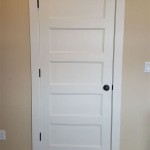Interior House Design: Elevating the Living Room Experience
The living room, often considered the heart of a home, serves as a central gathering space for family, friends, and individual relaxation. As such, thoughtful interior design of this area plays a critical role in establishing the overall ambiance and functionality of a residence. Effective living room design involves careful consideration of layout, furniture selection, color palettes, lighting schemes, and decorative accents, all working in concert to create a harmonious and inviting environment.
The design process begins with a thorough assessment of the existing space, taking into account its dimensions, natural light sources, and architectural features. Understanding these fundamental elements is essential for making informed decisions regarding furniture placement and overall room flow. A well-designed living room should facilitate easy movement and encourage social interaction, while also providing designated areas for individual activities such as reading or watching television.
Beyond spatial considerations, the aesthetic choices made in a living room significantly impact the psychological comfort and visual appeal of the space. A well-chosen color scheme, for instance, can evoke specific moods and create a sense of cohesion throughout the room. Similarly, the selection of furniture pieces should reflect both personal style and practical needs, striking a balance between comfort, durability, and aesthetic appeal. Ultimately, successful living room design transcends mere decoration and focuses on creating a space that genuinely enhances the quality of life for its occupants.
Key Point 1: Optimizing Space and Layout
The arrangement of furniture within a living room directly impacts its functionality and perceived spaciousness. A cluttered or poorly planned layout can make even a large room feel cramped and unwelcoming. Therefore, careful consideration must be given to the placement of key furniture pieces, such as sofas, chairs, and coffee tables, to ensure a comfortable and visually balanced environment.
One fundamental principle of space optimization is to create clear pathways for movement. Avoid obstructing doorways or creating bottlenecks by strategically positioning furniture to allow for easy circulation throughout the room. Consider the natural flow of traffic and arrange furniture accordingly, ensuring that individuals can move freely without having to navigate around obstacles.
The focal point of the room, such as a fireplace, a large window with a view, or a television, should also influence the layout. Arrange seating to face the focal point, creating a natural gathering area for conversation or entertainment. This strategy not only enhances the functionality of the space but also draws the eye and creates a sense of visual harmony.
In smaller living rooms, maximizing vertical space is crucial. Utilizing tall bookshelves or storage units can provide ample storage without consuming valuable floor space. Wall-mounted shelves and floating cabinets can also create a sense of openness and airiness, making the room feel larger than it actually is. Mirrors strategically placed can also enhance the impression of size and reflect light to brighten the space.
The use of area rugs can define different zones within the living room. A large rug can anchor the seating area, creating a cohesive and inviting space for conversation. Smaller rugs can be used to delineate separate areas, such as a reading nook or a play area, providing visual separation and adding visual interest.
Key Point 2: The Power of Color and Texture
Color and texture play a vital role in establishing the overall mood and aesthetic character of a living room. The careful selection and application of these elements can transform a mundane space into a vibrant, inviting, and personalized environment. Understanding the psychological effects of different colors and textures is crucial for creating a living room that reflects the desired atmosphere.
Color palettes should be chosen based on the desired mood and the existing architectural features of the room. Warm colors, such as reds, oranges, and yellows, can create a sense of coziness and intimacy, while cool colors, such as blues, greens, and purples, can evoke a feeling of tranquility and serenity. Neutral colors, such as whites, grays, and beiges, provide a versatile backdrop that can be easily accented with pops of color.
Consider the amount of natural light the room receives when selecting colors. Darker colors can make a small room feel even smaller and more enclosed, while lighter colors can reflect light and create a sense of spaciousness. In rooms with limited natural light, opt for lighter colors and incorporate artificial lighting to brighten the space.
Texture adds depth and visual interest to a living room. Incorporating a variety of textures, such as soft fabrics, smooth surfaces, and rough materials, can create a more dynamic and engaging environment. A combination of textures, like a velvet sofa paired with a woven rug and linen curtains, can elevate the overall aesthetic and add a touch of luxury.
Textural elements can also be incorporated through decorative accents, such as throw pillows, blankets, and artwork. These accessories provide an opportunity to introduce different textures and patterns, adding personality and visual appeal to the living room. Experiment with different combinations to find a balance that reflects personal style and enhances the overall design.
The use of natural materials, such as wood, stone, and plants, can also add texture and warmth to a living room. Wooden furniture, stone fireplaces, and indoor plants can create a connection to the outdoors, bringing a sense of nature into the home. These elements can also add character and improve the air quality of the space.
Key Point 3: Illuminating the Space: Lighting Strategies
Lighting is a critical element of interior design, impacting not only the functionality of a living room but also its ambiance and overall aesthetic appeal. A well-lit living room is essential for creating a comfortable and inviting space for relaxation, socializing, and other activities. Effective lighting design involves a combination of natural light, ambient lighting, task lighting, and accent lighting, working together to create a balanced and versatile environment.
Maximizing natural light is the first step in creating a well-lit living room. Keep windows clean and unobstructed to allow as much natural light as possible to enter the space. Consider using sheer curtains or blinds that allow light to filter through while still providing privacy. Mirrors strategically placed can also reflect natural light and brighten the room.
Ambient lighting provides the overall illumination for the living room. This type of lighting is typically achieved through overhead fixtures, such as chandeliers, pendant lights, or recessed lighting. Ambient lighting should be soft and diffused, creating a warm and inviting atmosphere. Dimmers can be used to adjust the intensity of the ambient lighting, allowing for greater control over the mood of the room.
Task lighting provides focused illumination for specific activities, such as reading, writing, or working. Table lamps, floor lamps, and adjustable spotlights are commonly used for task lighting in the living room. Position task lighting strategically to provide adequate illumination for the desired activity without creating glare or shadows.
Accent lighting is used to highlight specific features of the living room, such as artwork, architectural details, or decorative objects. This type of lighting is typically achieved through spotlights, track lighting, or wall sconces. Accent lighting can add depth and visual interest to the space, drawing attention to key elements and creating a more dynamic environment.
Consider the color temperature of the lighting fixtures when designing a living room lighting scheme. Warm light, with a color temperature of around 2700K, creates a cozy and inviting atmosphere, while cool light, with a color temperature of around 5000K, provides a brighter and more energizing environment. Choose lighting fixtures with a color temperature that complements the overall design style and the desired mood of the room.
Integrating smart lighting technology can further enhance the functionality and versatility of a living room. Smart lighting systems allow for remote control of lighting fixtures, as well as the ability to create customized lighting scenes for different activities. This technology can also be used to automate lighting based on time of day or occupancy, improving energy efficiency and enhancing the overall convenience of the space.
Beyond the practical aspects, the aesthetics of lighting fixtures are also important. Choose fixtures that complement the overall style of the living room and add to its visual appeal. Consider the shape, size, and finish of the fixtures, ensuring that they are proportionate to the space and contribute to the overall design scheme.

100 Living Room Interior Designs Designcafe

Classic Traditional Living Room Design By Havenly Interior Designer Laura

Liven Up Your Living Room With These Interior Design Ideas Goodhomes Co In

Contemporary Living Room Design Ideas Designcafe

Stunning Modern Living Room Interior Design Ideas In

Stunning Living Room Interior Designers In Bangalore Decorpot

Middle Class Small House Interior Design For Living Room

85 Beautiful Living Room Ideas That Will Stand The Test Of Time

30 Latest Living Room Designs With Pictures In 2024

10 Stunning Small Living Room Ideas To Maximize Space
Related Posts








